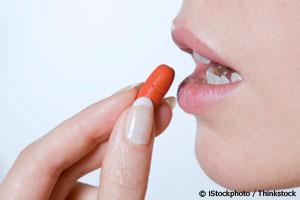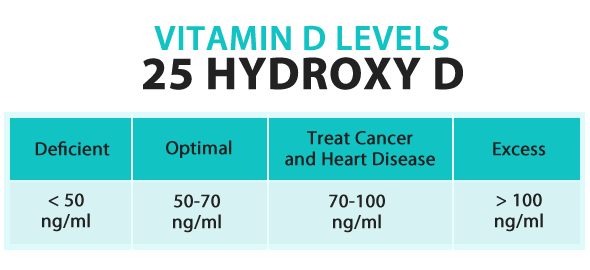Posted By Dr. Mercola | November 30 2011 | 119,793views

Story at-a-glance
- A meta-analysis of 50 trials looking at mortality rates for “doctor recommended” synthetic vitamin D2 supplements versus natural vitamin D3 shows a six percent risk reduction among those who used D3, compared to a two percent increased risk among those who used D2
- Research shows vitamin D3 is approximately 87 percent more potent in raising and maintaining vitamin D concentrations and produces 2- to 3-fold greater storage of vitamin D than does D2. D3 is also converted into its active form 500 percent faster
- Optimizing your vitamin D levels may be one of the most important steps you can take in support of your long-term health. The ideal way to do this is by exposing large amounts of skin to sunlight or a safe tanning bed, but if you need to use an oral supplement, make sure you’re taking vitamin D3
- The most important factor is your vitamin D serum level, which should ideally be between 50-70 ng/ml. When taking an oral vitamin D supplement, you should take enough to reach and maintain this therapeutic level. As a generic guideline, adults need to take about 8,000 IU’s a day to reach this level
By Dr. Mercola
Drisdol is the synthetic form of vitamin D2; the form of vitamin D typically prescribed by doctors.
But this is not the type produced by your body in response to sun or safe tanning bed exposure.
A recent meta-analysis by the Cochrane Database looked at mortality rates for people who supplemented their diets with D2 versus those who did so with D3, the form naturally produced by your body.
The analysis of 50 randomized controlled trials, which included a total of 94,000 participants, showed:
In an article posted on Live in the Now, Dr. John J. Cannell writes:
- A six percent relative risk reduction among those who used vitamin D3, but
- A two percent relative risk increase among those who used D2
"Amazingly, this study somehow slipped under the radar...
You would think a paper that took a look at tens of thousands of subjects and analyzed the efficacy of prescription vitamin D (D2) and over-the-counter vitamin D (D3) would warrant a news story or two.
To my knowledge, these papers are the first to paint such a clear picture about the efficacy between D3 and D2."
The Two Types of Vitamin D
Supplemental vitamin D comes in two forms:
They have long been regarded as equivalent and interchangeable+ especially since a recognized vitamin D expert, Dr. Michael Hollick, recoomended it. But that notion was based on studies of rickets prevention in infants conducted several decades ago. Today, we know a lot more about vitamin D, and the featured study offers compelling support for the recommendation to take vitamin D3 if you need to take an oral supplement—which is the same type of D vitamin created in your body when you expose your skin to sunlight.
- Ergocalciferol (vitamin D2)
- Cholecalciferol (vitamin D3)
According to the latest research, D3 is approximately 87 percent more potent in raising and maintaining vitamin D concentrations and produces 2- to 3-fold greater storage of vitamin D than does D2. Regardless of which form you use, your body must convert it into a more active form, and vitamin D3 is converted 500 percent faster than vitamin D2. Vitamin D2 also has a shorter shelf life, and its metabolites bind poorly with proteins, further hampering its effectiveness.
Unfortunately, vitamin D2—which is a synthetic version made by irradiating fungus and plant matter—is the form of vitamin D most often prescribed by doctors in the U.S. Hopefully this will change sooner rather than later.
As stated by Dr. Cannell in the featured article:
"While there may be explanations for D3's superiority other than improved efficacy, for the time being, these papers send doctors a message: use D3, not D2."
The Incredible Health Benefits of Vitamin D
Optimizing your vitamin D levels may be one of the most important steps you can take in support of your long-term health. There's overwhelming evidence that vitamin D is a key player in your overall health. This is understandable when you consider that it is not "just" a vitamin; it's actually a neuroregulatory steroidal hormone that influences nearly 3,000 different genes in your body. Receptors that respond to the vitamin have been found in almost every type of human cell, from your brain to your bones.
Just one example of an important gene that vitamin D up-regulates is your ability to fight infections, as well as chronic inflammation. It produces over 200 antimicrobial peptides, the most important of which is cathelicidin, a naturally occurring broad-spectrum antibiotic. This is one of the explanations for why it can be so effective against colds and influenza.
That said, keeping a close eye on your vitamin D levels is a wise move for most. The widespread vitamin D deficiency seen today is now thought to fuel an astonishingly diverse array of common chronic diseases, including:
| Cancer | Hypertension | Heart disease |
| Autism | Obesity | Rheumatoid arthritis |
| Diabetes 1 and 2 | Multiple Sclerosis | Crohn's disease |
| Cold & Flu | Inflammatory Bowel Disease | Tuberculosis |
| Septicemia | Signs of aging | Dementia |
| Eczema & Psoriasis | Insomnia | Hearing loss |
| Muscle pain | Cavities | Periodontal disease |
| Osteoporosis | Macular degeneration | Reduced C-section risk |
| Pre eclampsia | Seizures | Infertility |
| Asthma | Cystic fibrosis | Migraines |
| Depression | Alzheimer's disease | Schizophrenia |
What's Better than a Vitamin D3 Supplement?
While this article focuses on oral vitamin D supplementation, it's important to realize that the ideal way to optimize your vitamin D levels is through appropriate sun or safe tannig bed exposure. There are a number of reasons for this:
- When you expose your skin to the sun, your skin also synthesizes high amounts of cholesterol sulfate, which is very important for heart- and cardiovascular health. In fact, according to research by Dr. Stephanie Seneff, high LDL and subsequent heart disease may in fact be a symptom of cholesterol sulfate deficiency. Sulfur deficiency also promotes obesity and related health problems like diabetes
- When exposed to sunshine, your skin also synthesizes vitamin D3 sulfate. This form of vitamin D is water soluble, unlike oral vitamin D3 supplements, which is unsulfated. The water-soluble form can travel freely in your bloodstream, whereas the unsulfated form needs LDL (the so-called "bad" cholesterol) as a vehicle of transport. According to Dr. Stephanie Seneff, there's reason to believe that many of the profound benefits of vitamin D are actually due to the vitamin D sulfate. As a result, she suspects that the oral non-sulfated form of vitamin D might not provide all of the same benefits, because it cannot be converted to vitamin D sulfate
- You cannot overdose when getting your vitamin D from sun exposure, as your body has the ability to self-regulate and only make what it needs
Guidelines for Naturally Optimizing Your Vitamin D Levels
To optimize your levels, you need to expose large portions of your skin to the sun, and you need to do it for more than a few minutes. And, contrary to popular belief, the best time to be in the sun for vitamin D production is actually as near to solar noon as possible. During this time you need the shortest exposure time to produce vitamin D because UVB rays are most intense at this time. Plus, when the sun goes down toward the horizon, the UVB is filtered out much more than the dangerous UVA.
Just be cautious about the length of your exposure. You only need enough exposure to have your skin turn the lightest shade of pink. Once you reach this point your body will not make any additional vitamin D due to its self-regulating mechanism. Any additional exposure will only cause harm and damage to your skin.
Unfortunately, studies have shown only about 30 percent of Americans' circulating vitamin D is the product of sunlight exposure. This is a byproduct of public health agencies' misguided advice to stay out of the sun to avoid cancer (when in fact vitamin D from sun exposure will actually help prevent it).
The truth is, vitamin D from sun exposure or a safe tanning bed is the BEST way to optimize your vitamin D levels. Safe tanning beds have electronic ballasts rather than magnetic ballasts, which helps you avoid unnecessary exposure to health-harming EMF fields. They also have less of the dangerous UVA than sunlight, while unsafe ones have more UVA than sunlight.
Vitamin D Dosage Recommendations
If appropriate tanning is not feasible, then you'll be wise to consider an oral vitamin D3 supplement. According to the most recent findings by Carole Baggerly, founder of GrassrootsHealth, her research of nearly 10,000 people shows the ideal adult dose appears to be 8,000 IU's a day to get most into the healthy range. Just remember to get your vitamin D levels tested regularly if you take an oral supplement.
Important: Your Serum Level is what Really Matters
While 8,000 IU's of vitamin D3 per day is a general recommendation that appears to be beneficial for most people, vitamin D experts from around the world are in agreement that the most important factor is your vitamin D serum level. There's no specific dosage level at which "magic" happens. So the take-home message is that you need to take whatever dosage required to obtain a therapeutic level of vitamin D in your blood.
At the time (in 2007) the recommended level was 40-60 nanograms per milliliter (ng/ml). Since then, the optimal vitamin D level has been raised to 50-70 ng/ml, and when treating cancer or heart disease, as high as 70-100 ng/ml.

No comments:
Post a Comment